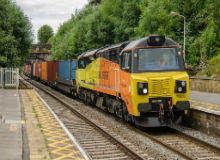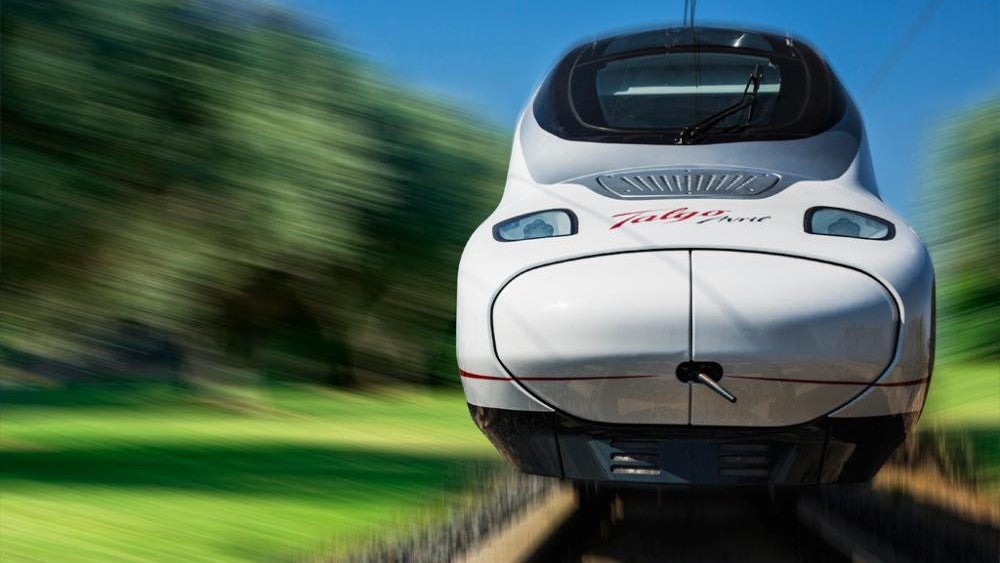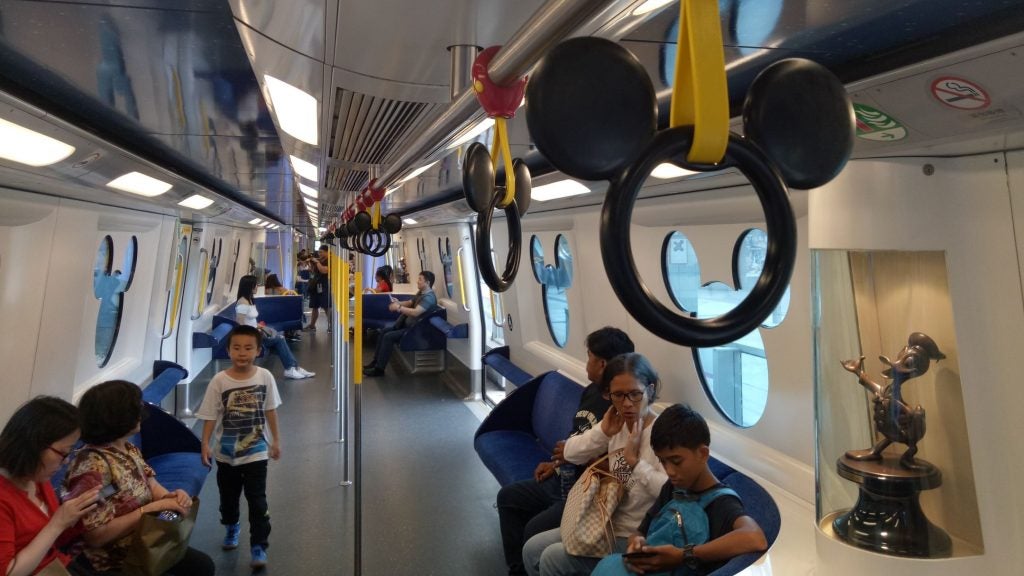
Launched in June 2011 with €6.6m in funding from the European Commission (EC), Sustrail is a collaborative project, encompassing 29 partners, including universities and industry specialists. Using a holistic approach, those involved hope to kick-start an era of modal shift across Europe.
By bringing together a number of organisations, it is hoped that Sustrail will help deal with an estimated 40% increase in demand for rail freight by 2030 and 80% by 2050, and shift 30% of road freight carried on distances over 300km to other modes of transport by 2030, helping to deliver on environmental obligations.
As part of this, it was decided that a new generation of freight rolling stock was required. This is where the UK’s University of Huddersfield was drafted in to work on what is known as ‘the freight train of the future’.
"We made a proposal for a large project that would develop a sustainable freight vehicle and enable the EC to move forward with its wish to shift freight from road onto rail," says Simon Iwnicki, professor of railway engineering and director of the Institute of Railway Research at the University of Huddersfield.
"So we split it into two main areas: the infrastructure and the rolling stock. The University of Huddersfield led the rolling stock work package and Network Rail led the infrastructure work package."
See Also:
Before work began on the design of the freight vehicle, two ‘work packages’ were completed that studied what type of freight could easily be moved from road to rail, the current state of rail freight and how much is carried by rail.
How well do you really know your competitors?
Access the most comprehensive Company Profiles on the market, powered by GlobalData. Save hours of research. Gain competitive edge.

Thank you!
Your download email will arrive shortly
Not ready to buy yet? Download a free sample
We are confident about the unique quality of our Company Profiles. However, we want you to make the most beneficial decision for your business, so we offer a free sample that you can download by submitting the below form
By GlobalDataFrom this, the requirements of the rolling stock were defined, with a clear emphasis on making the stock more sustainable, says Iwnicki.
"We started the work on the vehicle by taking the specification and, first of all, having a review of the potential novel design features that we could include in a freight vehicle," he adds.
Innovative, but not ‘too radical’
A key component of the rolling stock vehicle, and something that Iwnicki is keen to stress, is that, while it is innovative, it is not too radical as to cause plenty of head scratching – "there have been many novel freight vehicles designs carried out of the last 30 years or more – but many have not been successful."
"I think one reason why some of the previous designs have failed is because they were too radical. They might have been able to deliver fantastic achievements, but they were a step too far, a bit too blue sky," he explains.
"We wanted things where if you took it [the freight vehicle] into maintenance shed, the people in there wouldn’t say ‘wow, is this a spaceship?’ or ‘I don’t know how to work with this’, but would recognise the components."
Required to reduce track damage and obtain a higher speed – 140km per hour – as well as to implement an advanced braking system and condition monitoring so that the vehicle could be flagged up when it needed maintenance, Iwnicki and his colleagues focused on modifying elements from a Y25 bogie, a common freight vehicle throughout Europe.
Such an approach meant changes to the suspension system. "The Y25 is quite a clever system. [However], the difficulty with a freight vehicle suspension is the very high difference between the weight of the vehicle when it is loaded and unloaded; it’s huge," Iwnicki explains.
The Dutch rail network will run entirely on renewable wind energy by 2018.
"It’s almost like designing two different suspensions, such as a suspension for a car that at the same time can turn itself into a heavily loaded truck; we modified the Y25 suspension to make the wheel set restraint flexible."
However, by changing the characteristics of the suspension and making it more flexible, one potential problem was a lack of stability when running at higher speeds and the vehicle starting to oscillate. To rectify this, the university team introduced a link component between the axles on the bogie.
"By doing this, and using computer simulation to optimise the parameters of the various components, we could then increase [the speed] to 140km per hour, running stable but still with a flexible bogie so it wasn’t doing much track damage," adds Iwnicki.
The bogie’s electronic control system is powered by an energy harvesting system, which takes electrical power from the motion of the vehicle.
"We put a generator on one wheel," says Iwnicki. "This can run the electronic braking system and the condition monitoring system."
An increasing demand for rail freight
Sustrail also includes work on the rail infrastructure, or "optimisation of the track system" as it is described on the project’s official website.
For this, the UK’s Network Rail worked as the technical lead for the project.
"Sustrail appealed to us as it looks to improve the competitiveness of rail freight via infrastructure and vehicle innovations that together improve system resilience, costs and vehicle speeds," says Kevin Blacktop, senior research and development specialist at Network Rail.
Network Rail’s involvement included "developing and reviewing deliverables, providing track access and data, leading workshops and presenting at dissemination events", he adds.
To assess freight performance, three routes were selected: one in Spain as part of the Mediterranean Corridor; the Bulgarian route between Kalotina at the Serbian border and Svilengrad at the Turkish border; and two in the UK: the cross country route and the route from Southampton to Birmingham via Reading.
"We have flexible track access charging that encourages the use of track-friendly vehicles," says Blacktop.
And, he adds, Network Rail’s plans to increase capacity over the network via new signalling systems "will provide more opportunity for rail freight".
The necessity of improving rolling stock and cutting damage to infrastructure is demonstrated by figures showing that, in the UK alone, freight demand is expected to grow at least 30% over the next decade, the equivalent of 240 additional freight trains a day. Blacktop adds that this could be as much as 140% over the next 30 years.
"The EU sees many benefits in increasing the rail freight market share across the whole of Europe, in terms of reducing congestion and emissions," he continues.
As such, Network Rail has also undertaken a consultation exercise on behalf of the UK Department for Transport regarding the potential establishment of a European rail freight corridor linking the UK with continental Europe.
Cautious optimism
Looking at the future of Sustrail and rolling stock, Iwnicki is cautiously optimistic that the project has helped to lay the foundations for revolutionising rail freight transportation.
"The railway industry, because it is so conservative, there are a lot of hoops you have to jump through to get a vehicle approved to run anywhere in Europe," he says.
"I’m optimistic, but it is difficult to say at this stage. There are lots of hurdles."
Iwnicki and his colleagues have built a prototype vehicle consisting of two bogies and a body which, at the time of writing, is in Romania on a test track, run at 150km per hour. The braking system and other core components are now being tested.
A recent study found that directing public subsidies to infrastructure managers correlates with a better performance of the railway network.
An additional bogie was also taken to an exhibition in Munich, which generated interest from "several potential players".
"The industry partners in the project are taking the lead in the commercial aspects but we are supporting this. We have exhibited the Sustrail Bogie at an international logistics exhibition and there has already been significant interest," says Iwnicki.
"For a research project, it is a great result that a prototype has been manufactured and tested and it’s meeting all the standards. But it costs a huge amount of money to go one step forward and have a vehicle approved to run. That’s a significant barrier for us but, if we get enough interest, we will get over that barrier."
Whatever happens next, Iwnicki is pleased that Sustrail has been able to demonstrate that the technology behind a new generation of freight rolling stock is viable.
"I think these [types] of projects are putting in place the technology so that when the political and planning and commercial incentives are all lined up correctly, we’ll have the technology, the vehicles and infrastructure ready to do it."
Blacktop adds: "Rail freight operates in a very competitive market and it is difficult to fund new equipment, so the business case for change needs to be a compelling one."
Sustrail has certainly played its part so far.






